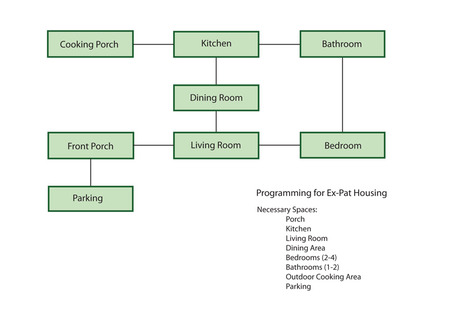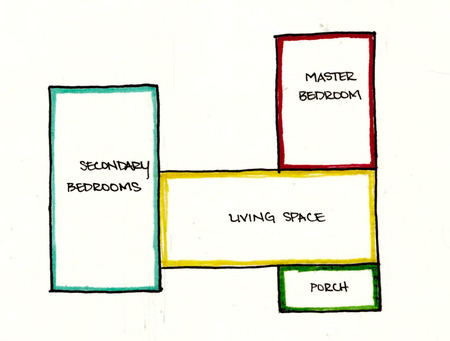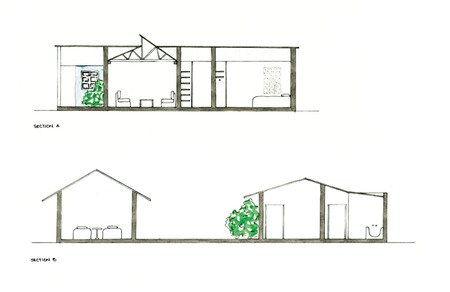Housing Design Proposal
 Friday, March 2, 2012 at 9:22AM
Friday, March 2, 2012 at 9:22AM Expatriate Housing Programming 
Our team signed up to work on the expatriate housing programming. We used two methods of diagramming to portray our interpretation of program relations. The first was a more simple, quick look at what spaces are related, a "bubble" diagram. The connections made could either be because the spaces should be attached for circulation, or more functional aspects like sharing a plumbing wall.

The second diagram, an Adjacency Matrix, is a much more in depth look into how each program is related to every other space in the house. We decided to created four categories to help us define these relations. Adjacent, or primary the primary connection, means that the spaces should be attached for convenience or functional purposes. Nearby is a secondary connection, and not adjacent means that the spaces should not or would not be near each other in the house for privacy reasons or for front/back placement within the house. Not related are simply spaces that do not have an important correlation.
Expatriate House Design Scheme
After defining these adjacencies we diagrammed a layout for how we could achieve everything on our list, as well as focusing on passive ventilation and creating a private courtyard.
When designing this house, our team thought about the site plan and about the multiple driveways and pedestrian paths that border many of the lots. In thinking about an expatriate coming back to Haiti after living in the US for a while, we thought they might have grown accustomed to the American standard of a private backyard. So, we wanted to create a house plan that would give them a sense of privacy with a courtyard in the back of the house. If they want to lay down outside and read a book and not feel like everyone can see them, or even if they want to open up all the doors to the courtyard and truly blur the definition between interior and exterior, then they can do so without everyone being able to see inside.
Another aspect of this courtyard, and "H" shape plan arrangement is that it helps to promote passive ventilation, a leading factor in our house design. With each branch of this house being single loaded, cross ventilation is easily achieved. The bathrooms are pulled from the main form to obtain cross ventilation, as apposed to only having one window in the bathroom wall and having more stagnant air. Also when designing the roof plan and gables, we added a clerestory for stack ventilation.








